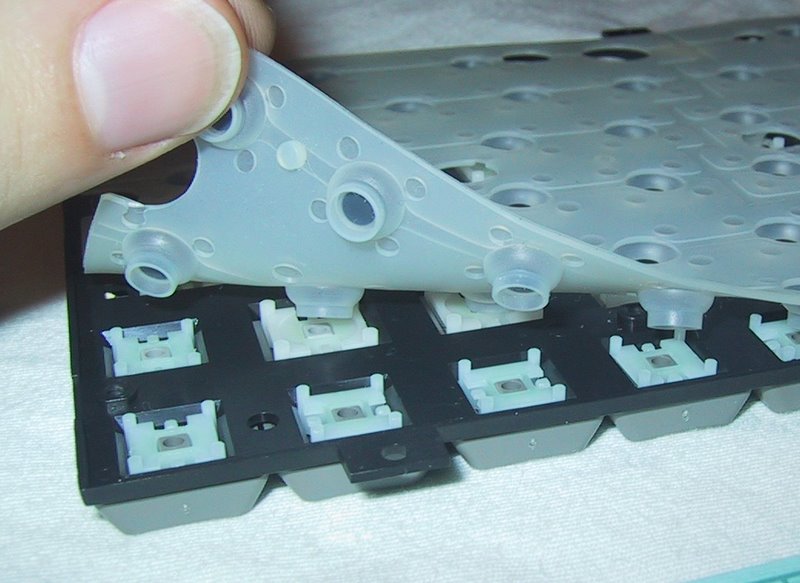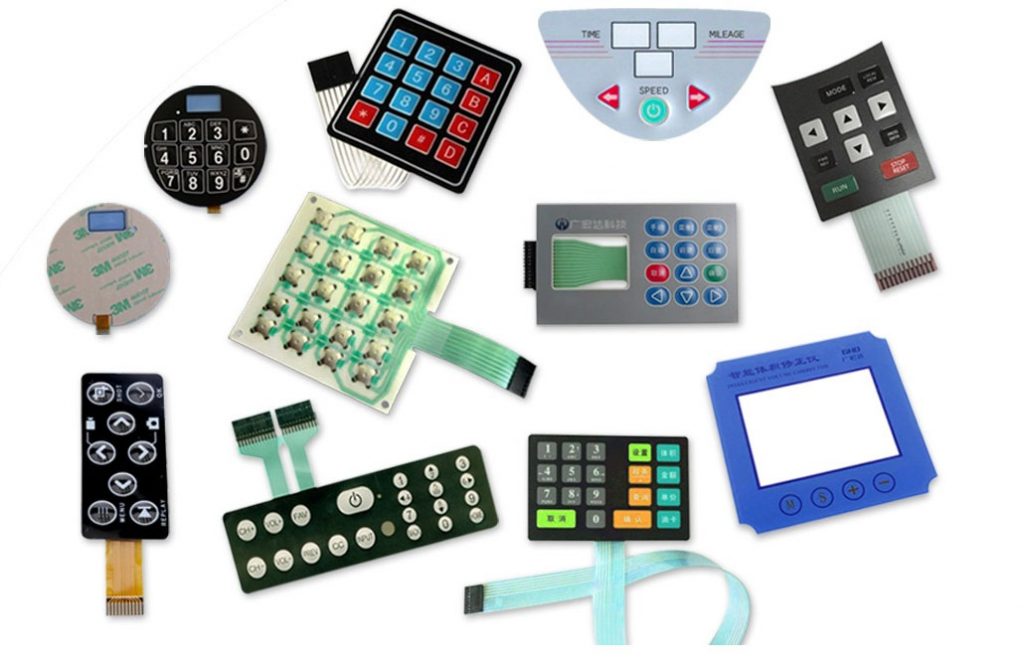Membrane Switch Manufacturer Serving Hospital and Military Industries
Membrane Switch Manufacturer Serving Hospital and Military Industries
Blog Article
Understanding the Significance of Membrane Switch in Modern Electronic Devices and Their Applications
Membrane switches over act as a necessary part in modern electronics, providing an effective interface for individual communication. Their personalized and lightweight nature makes them suitable for a range of applications across varied markets. Comprehending their vital components and advantages can supply understandings right into their expanding importance. As modern technology continues to advancement, the development of Membrane changes elevates questions concerning their future applications and layout innovations. What lies ahead in this vibrant field?

What Are Membrane Switches?
Membrane switches are important components in modern electronics, functioning as customer interfaces that promote communication between users and devices. These buttons include several layers, including a graphic overlay, a sticky layer, and a circuit layer, all of which collaborate to develop a sturdy and practical interface. The layout enables for a flat, low-profile remedy that can be personalized regarding size, form, and visual appearance, making them appropriate for different applications, from customer electronic devices to medical devices. The responsive responses given by Membrane switches over boosts customer experience, while their resistance to dirt and wetness makes them perfect for challenging environments. Membrane buttons can include features such as backlighting and printed graphics, further broadening their use. Their flexibility and effectiveness make them a recommended option in sectors where dependability and convenience of use are paramount, ultimately adding to the smooth operation of modern digital tools.
Secret Parts of Membrane Changes
While various components add to the performance of a membrane layer button, three primary layers play significant functions in its design and operation. The top layer, usually made from a sturdy polymer, works as the interface for individual communication, frequently including published graphics and icons. Below this is the spacer layer, which maintains the necessary distance in between the leading layer and the circuit layer. This spacer layer guarantees that the switch activates only when pushed, avoiding unexpected inputs. The circuit layer contains conductive traces that complete the electrical circuit when the top layer is depressed. These traces can be made from various products, consisting of copper or silver. Together, these components develop a durable and trustworthy device that is compact and versatile, ideal for a large range of electronic applications, from home home appliances to medical tools. Comprehending these vital elements is essential for valuing the overall functionality of Membrane switches.
Advantages of Making Use Of Membrane Switches

Membrane Switch Production Refine
Understanding the Membrane switch manufacturing process discloses the detailed steps associated with generating these important elements. The process typically begins with the style stage, where specifications and formats are developed making use of specialized software program. Following this, the visuals overlay is printed on a versatile substrate, commonly using high-resolution printing strategies to assure clearness and precision.Next, the sticky layers are applied, which serve to bond the different parts with each other. The circuit layers, made from conductive inks or materials, are after that published onto a separate substratum. These layers are very carefully aligned and laminated flooring to produce a functional switch.After setting up, the switches undergo evaluating to confirm functionality and sturdiness. Quality control steps are implemented throughout the process to recognize and correct any defects. The finished Membrane switches are packaged and prepared for distribution, prepared to fulfill the needs of modern-day electronic applications.
Applications of Membrane Changes in Various Industries
Membrane buttons are progressively used across different markets, specifically in medical devices and consumer electronics. In the medical field, they offer trustworthy control user interfaces for gadgets that require precise operation. Likewise, in customer electronic devices, these buttons boost individual communication by providing responsive and sleek user interfaces.
Medical Tools Control
Many contemporary clinical devices use Membrane buttons for streamlined procedure and boosted individual communication. These switches provide a trusted, durable user interface for a selection of applications, including analysis tools, patient monitoring systems, and medical tools. Their adjustable styles enable particular designs that can accommodate the distinct requirements of health care experts, ensuring user-friendly navigating and efficient accessibility to crucial functions. Additionally, Membrane switches are immune to contaminants, making them suitable for sterilized environments. The tactile responses they use can enhance individual self-confidence, minimizing the danger of mistakes throughout essential clinical treatments. Overall, the assimilation of Membrane buttons in clinical equipment greatly adds to improved functional efficiency and client safety in health care settings.
Customer Electronic Devices Interfaces
In the domain name of consumer electronic devices, Membrane buttons play an important function in boosting individual interfaces throughout a vast array of devices. These buttons are essential to items such as remotes, microwaves, and gaming consoles, giving a straightforward and reliable interface. Their design permits for a seamless integration of graphics and capability, making it possible for makers to create streamlined, contemporary aesthetic appeals without jeopardizing use. Membrane switches are likewise recognized for their toughness, typically holding up against substantial usage and direct exposure to different environmental problems. Furthermore, they can include attributes like backlighting and tactile comments, more improving the individual experience. As customer demands for advanced yet instinctive user interfaces expand, Membrane switches over continue to be an essential element ahead of time electronic device performance.
Style Factors To Consider for Membrane Switches
Designing efficient Membrane switches over requires mindful focus to numerous aspects that affect both functionality and user experience. One vital factor to consider is the selection of products, as they see post can influence durability, responsive responses, and visual allure. Picking a suitable adhesive is crucial for assuring long-lasting attachment and resistance to environmental factors.In enhancement, the format and style of the button have to fit individual interaction, with switch sizes and spacing maximized for simplicity of use. The consolidation of graphics and labeling should prioritize clarity and exposure under different lighting conditions.Consideration of electric attributes, such as actuation force and switch level of sensitivity, will enhance the responsiveness of the Membrane switch. Furthermore, the layout needs to accommodate manufacturing processes to guarantee cost-effectiveness and prompt production. On the whole, a well-balanced layout boosts both the functionality and the user experience of Membrane switches in modern electronic devices.

Future Trends in Membrane Switch Modern Technology
As technology continues to progress, Membrane switches are poised to incorporate new improvements that will boost their functionality and application in various fields. One substantial fad is the unification of long lasting and adaptable materials, which will raise the lifespan and reliability of these buttons. Boosted surface area textures and adjustable graphics are additionally prepared for, enabling more user-friendly individual interfaces.Moreover, the assimilation of clever technology, such as touch-sensitive surfaces and haptic comments, is expected to enhance customer communication, making Membrane switches over more engaging and responsive. Furthermore, developments in published electronic devices will certainly make it possible for extra complex circuitry within thinner profiles, further expanding design possibilities.Sustainability will also play an important role in future developments, as producers explore environmentally friendly materials and production procedures. On the whole, these fads will certainly ensure that Membrane switches continue to be crucial and relevant in an interconnected and progressively digital world.
Regularly Asked Inquiries
Just How Do Membrane Switches Over Contrast to Conventional Mechanical Switches?
Membrane switches deal advantages over conventional mechanical buttons, consisting of decreased dimension, lighter weight, and enhanced sturdiness. They generally offer a secured surface area, enhancing resistance to dirt and wetness, making them ideal for varied applications.
What Materials Are Generally Utilized in Membrane Switch Building And Construction?

Can Membrane Changes Withstand Extreme Environmental Issues?
Membrane switches can stand up to extreme environmental conditions, depending on their design and materials. Top quality constructions frequently feature resilience against temperature level variations, moisture, and exposure to chemicals, making them appropriate for various demanding applications throughout markets.
Exactly How Long Do Membrane Switches Over Normally Last Prior To Failure?
Membrane changes usually exhibit a lifespan varying from 1 to 10 million actuations, depending upon elements such as usage regularity, environmental conditions, and Source manufacturing quality. Normal maintenance can expand their longevity and operational reliability substantially.
Are Membrane Switches Over Adjustable for Specific Applications?
Membrane switches are without a doubt adjustable for specific applications. They can be customized in dimension, functionality, and style, permitting producers to fulfill distinct customer requirements and improve item appearances while maintaining functional performance and sturdiness. Membrane buttons are vital parts in modern electronics, offering as customer interfaces that facilitate interaction in between customers and devices. The responsive feedback offered by Membrane switches over enhances user experience, while their resistance to dust and wetness makes them excellent for challenging atmospheres. The consolidation of graphics and labeling need to prioritize clarity and visibility under different illumination conditions.Consideration of electric features, such as actuation pressure and button sensitivity, will enhance the responsiveness of the Membrane switch. Enhanced surface textures and customizable graphics are likewise expected, enabling for even more instinctive customer interfaces.Moreover, the assimilation of clever modern technology, such as touch-sensitive surface areas and haptic he has a good point responses, is anticipated to enhance individual interaction, making Membrane switches much more responsive and engaging. Membrane changes offer advantages over traditional mechanical switches, consisting of minimized dimension, lighter weight, and improved toughness.
Report this page